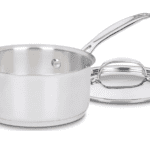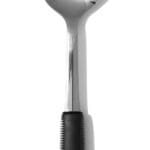How I Finally Learned to Make the Perfect Poached Egg
Master the simple homestead way to make a perfectly poached egg. Fresh eggs, gentle heat, and an easy method for that golden, runny yolk.
Servings: 1 Servings
Calories: 143kcal
As an Amazon Associate I earn from qualifying purchases.
Equipment
Ingredients
- 2 Large Fresh Eggs
- 4 Inches Water
- Optional: small splash of vinegar if using older eggs
Instructions
Step-by-Step: How to Poach an Egg the Simple Way
- Heat the water. Fill your pot with about 3–4 inches of water and bring it to a gentle simmer. The water temperature should be around 190°F if you’re using a thermometer.4 Inches Water, Optional: small splash of vinegar if using older eggs
- Not a full boiling water situation. You’ll know it’s right when you see little bubbles forming on the bottom of the pan and slowly rising.
- Crack the egg. Crack your egg into a small bowl or first. This makes it easier to slide into the water later without breaking the yolk.2 Large Fresh Eggs
- Make a gentle swirl. Use a wooden spoon to stir the simmering water in one direction. When you see a small whirlpool form, the center of the vortex, that’s where your egg will go.
- Carefully slide the egg from your bowl into the center of the vortex. The swirling water wraps the white around the yolk.
- Cook to your liking. Let it cook undisturbed for about 3–4 minutes for a runny yolk, or a little longer if you prefer a firmer yolk.
- Remove and drain. Use a slotted spoon to lift the egg out gently. Rest it on a few paper towels to absorb any extra moisture.
Notes
Tips from the Homestead Kitchen
Use the freshest eggs you have. Older eggs tend to have watery whites that spread out in the pan. Older eggs can still work. If your eggs are a few days old, try pouring the raw egg through a fine-mesh strainer to remove the thin liquidy white. You’ll be left with the part that makes firmer whites and that beautiful shape. Keep the water at a gentle simmer. If it starts boiling, the egg whites can get ragged. No vinegar needed. Fresh eggs hold together on their own. Poaching for later? Slip cooked eggs into a bowl of cold water, then reheat them in hot water for 30 seconds before serving.Nutrition
Calories: 143kcal | Carbohydrates: 1g | Protein: 13g | Fat: 10g | Saturated Fat: 3g | Polyunsaturated Fat: 2g | Monounsaturated Fat: 4g | Trans Fat: 0.04g | Cholesterol: 372mg | Sodium: 143mg | Potassium: 138mg | Sugar: 0.4g | Vitamin A: 540IU | Calcium: 56mg | Iron: 2mg


